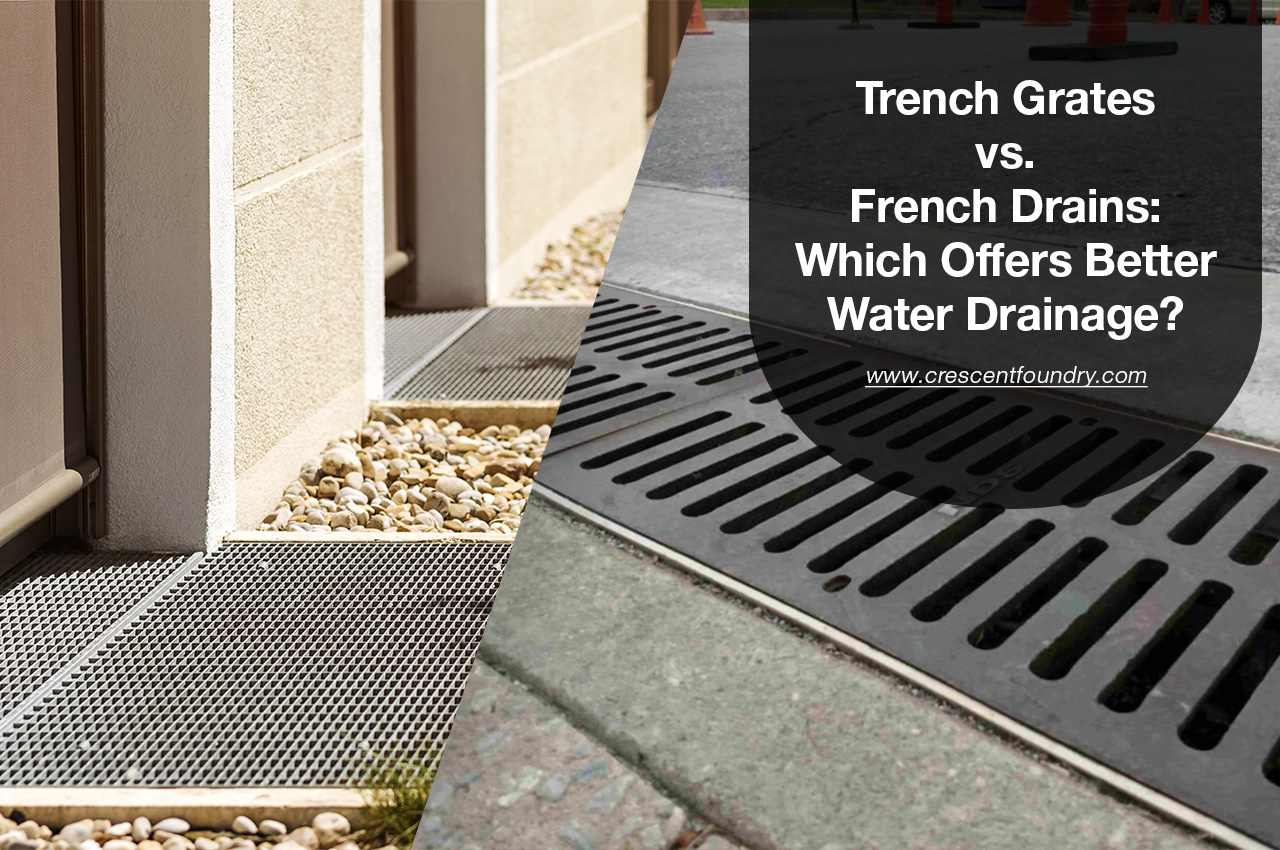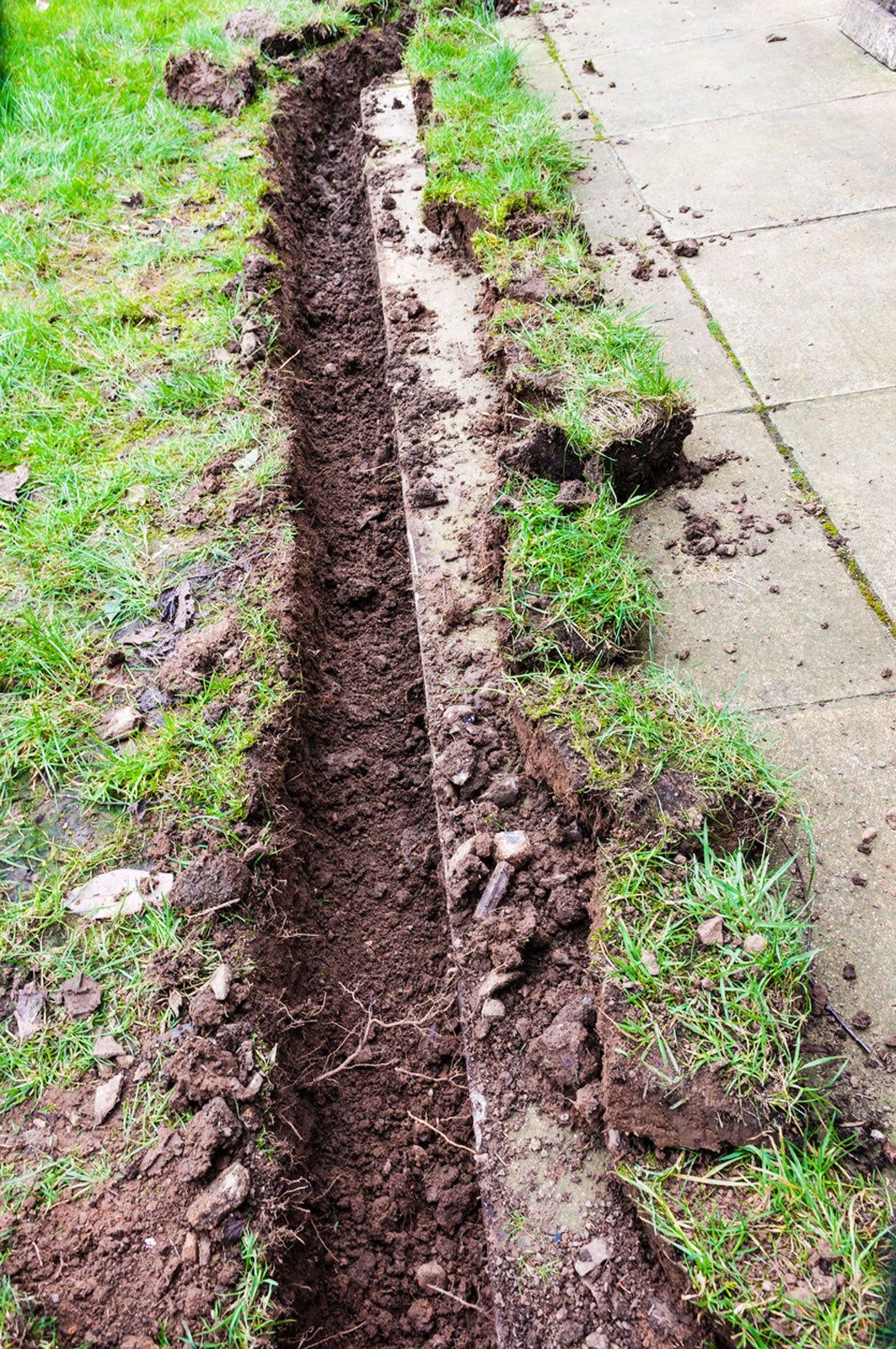Homeowner’s Guide to Portland French Drain Cost and Worth
Homeowner’s Guide to Portland French Drain Cost and Worth
Blog Article
How a French Drainpipe Can Assist Prevent Water Damages in Your Cellar
If you're managing a damp basement, a French drain could be the option you require. Portland French Drain. This system successfully reroutes water far from your structure, assisting to avoid pricey damages. Comprehending how it functions and acknowledging the indications that you need one can make a substantial difference in your house's safety and comfort. Before you decide, it's critical to check out the advantages and installation procedure to see if it's the appropriate fit for your situation.
What Is a French Drainpipe?
A French drain is a simple yet efficient remedy for handling excess water around your residential or commercial property. It's designed to reroute water far from at risk areas, like your cellar or structure. Generally, it contains a trench full of crushed rock and a perforated pipe that gathers and channels water. When rainwater or groundwater builds up, the drainpipe efficiently guides it away, protecting against prospective damage.You might observe French drains pipes set up along residential property lines, driveways, or even near your home's foundation. They can be found in different dimensions and setups, making them adaptable to different landscapes and water drainage demands. Mounting a French drain can aid you stay clear of expensive repair work and shield your home's structural honesty. If you've been dealing with water merging or soaked areas in your backyard, a French drainpipe can be the service you require. It's an aggressive procedure to ensure your residential or commercial property remains risk-free and dry from water-related concerns.
Just how Does a French Drain Work?
A French drain kicks into action to reroute it effectively when water accumulates around your home. This system includes a trench filled up with gravel and a perforated pipeline near the bottom. The pipeline gathers excess water from the dirt and networks it away from your foundation.As rainwater or groundwater seeps right into the crushed rock, it moves through the perforations and right into the pipeline. Gravity does the job, pulling the water away from your cellar and directing it to a marked water drainage area, like a tornado drain or completely dry well.You can mount a French drainpipe either inside or outside your home. It'll protect against water from merging near your foundation if you choose an exterior configuration. An interior drainpipe will catch water that seeps through your cellar walls. This efficient style keeps your area completely dry, permitting you to enjoy your home without the fear of water damages.
Benefits of Mounting a French Drainpipe
Setting up a French drainpipe can significantly enhance your home's durability versus water damage. You'll enjoy reliable water diversion, which helps decrease mold growth and safeguard your property. Plus, a well-maintained drainage system can even boost your residential or commercial property's value.
Effective Water Diversion

Minimized Mold Development
Because dampness develops an ideal atmosphere for mold to grow, lowering water buildup around your home is crucial for maintaining a healthy living area. Mounting a French drain efficiently channels excess water far from your foundation, maintaining your basement dry. This proactive action greatly decreases moisture levels, making it harder for mold and mildew spores to clear up and grow.With less moisture, you'll locate it simpler to breathe and appreciate a clean, safe setting. Plus, you'll lower the danger of health concerns connected with mold exposure, such as allergic reactions and respiratory troubles. By investing in a French drainpipe, you're taking an essential action toward a mold-free cellar, ensuring that your home continues to be a comfortable area for you and your family.
Raised Residential Property Value
A French drainpipe can significantly enhance your home's worth, making it a smart financial investment for property owners. When possible buyers see a well-kept cellar devoid of water damages, they're more probable to be impressed. This function not just enhances your home's charm however also indicates that you have actually taken aggressive steps to secure it. By reducing the risk of water-related problems, your property becomes extra eye-catching in a competitive market, typically bring about greater offers. Additionally, the long-lasting cost savings on fixings and upkeep can translate into enhanced equity. Setting up a French drainpipe reveals you appreciate your home's honesty, comforting buyers that they're making a sound purchase. Ultimately, it's an important addition that settles in more methods than one.
Indications You Need a French Drain
If you notice persistent water accumulation in your backyard or cellar, it's a clear indication that you may need a French drainpipe. Additionally, a stuffy smell can suggest trapped moisture, which can lead to larger issues. Dealing with these signs early can assist protect against significant water try this out damage to your home.
Persistent Water Buildup
When you see consistent water accumulation around your home, it's a clear indicator that a French drain could be essential. Water merging near your foundation can bring about considerable damage gradually, including architectural issues and mold and mildew growth. You need to take note of locations where water seems to accumulate after heavy rainfalls or snowmelt. If your yard remains soggy for days, it's time to do something about it. In addition, try to find signs of erosion or sloppy patches, as these can show poor drain. Installing a French drain aids redirect water far from your home, protecting your foundation and lowering the danger of water damages. Don't wait on bigger problems to emerge-- resolving water accumulation currently can conserve you costly repair services later.
Moldy Smell Presence
Consistent water buildup typically brings about more than just noticeable merging; it can create an atmosphere ripe for stuffy odors. If you observe a wet, stale odor in your cellar, it's a sign that wetness is remaining, usually due to bad drain. This smell commonly indicates mold or mildew development, which can posture health risks and damage your personal belongings. You could locate that the odor aggravates throughout moist climate or after hefty rainfalls. It's time to review a French drainpipe if you're fighting relentless stuffy smells. This system reroutes water far from your foundation, decreasing wetness levels and combating those unpleasant smells. Don't overlook this indication; resolving it immediately can conserve you from a lot more considerable water damages down the line.
The Setup Process of a French Drain
Installing a French drainpipe can be an uncomplicated procedure that considerably improves your home's water damage prevention. Initially, review the location where you want to install the drainpipe, guaranteeing it slopes away from your foundation. Next off, mark the trench's path, which ought to be about 6-8 inches vast and 18-24 inches deep.Excavate the trench, getting rid of soil as needed. Portland French Drain. Lay down landscape textile to stop soil from obstructing the drain once you have actually got your trench. After that, add a layer of gravel near the bottom. Area a perforated pipe in addition to the gravel, ensuring the openings face downward for reliable drainage.Cover the pipe with even more gravel, leaving concerning 3 inches of area at the top. Fold the landscape textile over the gravel to protect it. Fill in the trench with soil, condensing it as you go. You've currently established a dependable system to reroute water away from your cellar!
Maintenance Tips for Your French Drainpipe
A French drain is created to efficiently take care of water circulation, regular upkeep is important to validate its ongoing effectiveness. Begin by examining the drain and Get the facts its environments for debris or obstructions. Clear any fallen leaves, dirt, or debris that could build up, specifically after hefty rains.Next, inspect the electrical outlet for proper water drainage. It ought to guide water far from your foundation-- if it does not, you might need to change its placement. Furthermore, validate that the gravel surrounding the drainpipe is intact and hasn't settled in time; this aids preserve appropriate water flow.Consider setting up a yearly specialist inspection to catch any kind of issues early. Address them promptly to stay clear of bigger issues down the roadway if you observe any type of indications of water damage or pooling. With a little attention, your French drain can effectively protect your cellar for several years ahead.
Price Factors To Consider and Long-Term Cost Savings
When thinking about a French drain, it's essential to weigh both the initial financial investment and the lasting financial savings it can supply. While the in advance expense might seem substantial, assume regarding it as an investment in your home's future. Mounting a French drain usually ranges from $1,500 to $5,500, depending on your basement's dimension and the complexity of the installation.However, this cost can save you thousands in prospective water damages, mold removal, and structure repair work. By avoiding water buildup, you're likewise safeguarding your home's worth and preventing costly insurance policy claims. In addition, a completely dry basement can reduce your energy expenses, as dampness can bring about enhanced heating & cooling costs. Eventually, the peace of mind that includes knowing your home is secured from water damage is valuable. Consider these aspects thoroughly to make an educated decision that profits you over time.

Frequently Asked Inquiries
Can a French Drainpipe Be Set Up in Any Kind Of Dirt?
Yes, a French drain can be installed in numerous soil types, consisting of sand, clay, and loam. However, correct setup and drainage preparation are necessary to assure it works effectively in your details soil problems.
For how long Does a French Drainpipe Last Before Requiring Substitute?
A French drain typically lasts around 30 to 40 years with appropriate installment and maintenance. Nonetheless, elements like dirt type and water circulation look at here now can influence its life expectancy, so watch on its performance.
Can French Drains Assist With Yard Drain Issues?
Yes, French drains pipes can properly deal with lawn water drainage issues. They guide excess water far from trouble areas, stopping merging and ensuring your landscape stays healthy and balanced. Mounting one can significantly enhance your backyard's total drainage performance.
Will a French Drain Impact My Landscape Design or Yard?
A French drain can impact your landscaping or garden, particularly if it's mounted poorly. You'll want to make sure it's placed tactically to lessen disturbance, maintaining your plants and overall aesthetic while improving drainage.
Are There Alternatives to French Drains for Basement Water Problems?
Yes, there are options to French drains for basement water problems. You may take into consideration sump pumps, water-proof coverings, or grading your yard to redirect water away. Each choice has its benefits, so assess what fits your requirements best. When rainwater or groundwater develops up, the drain effectively guides it away, stopping prospective damage.You may discover French drains set up along building lines, driveways, or also near your home's structure. Gravity does the work, pulling the water away from your basement and routing it to a marked water drainage location, like a tornado drain or dry well.You can install a French drainpipe either inside or outside your home. By properly funneling water away from your building, a French drainpipe can significantly decrease the risk of water damage. Mounting a French drain helps redirect water away from your home, safeguarding your structure and minimizing the threat of water damage. Setting up a French drain can be an uncomplicated procedure that considerably enhances your home's water damages prevention.
Report this page